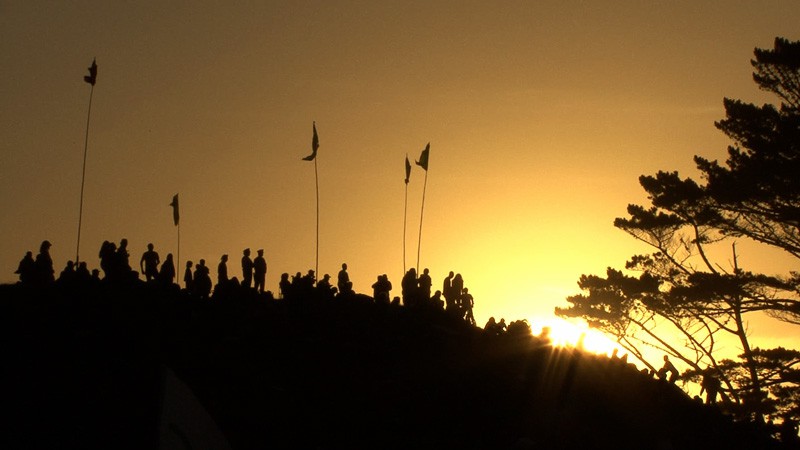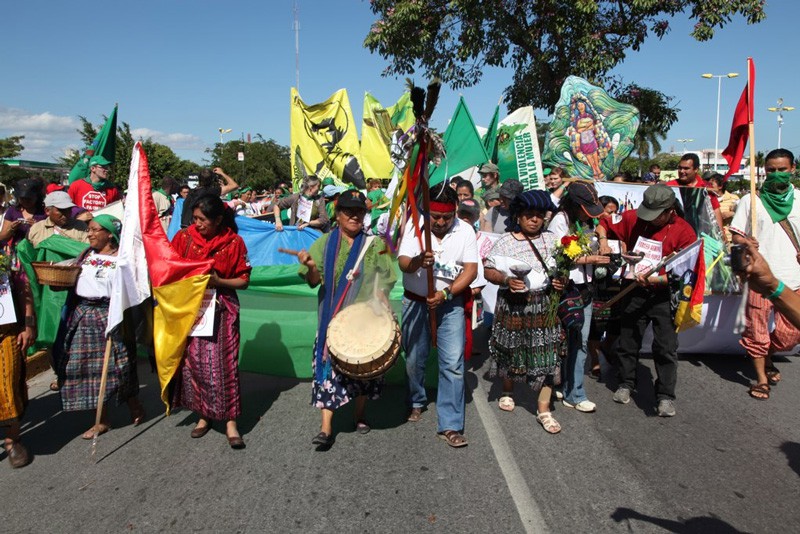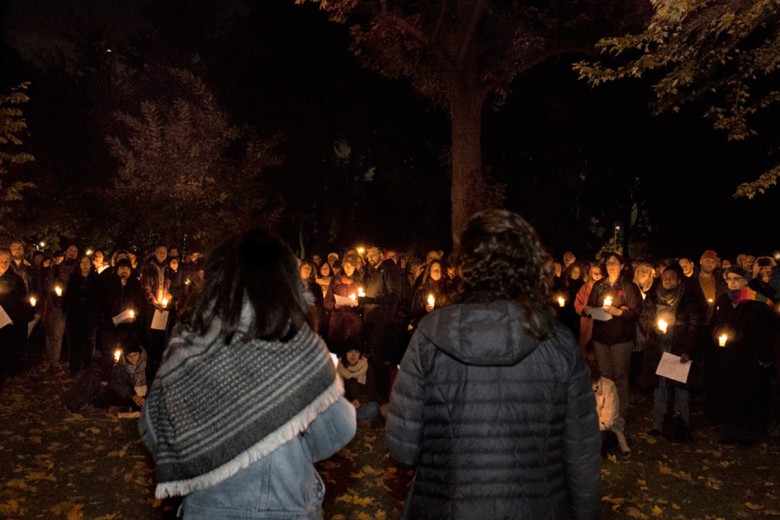
It’s the year 2011. Icebergs are melting, forest fires are raging out of control, sea levels are rising, drinking water is becoming scarcer, droughts, famine, conflict and other climate-related pressures are growing exponentially. If we continue to drag our feet, resisting the changes we need to make, the majority of scientists are predicting that we will experience runaway climate destabilization within this century.
How can this crisis — the greatest challenge humanity has yet faced — be transformed into the greatest love story on earth?
“The future belongs to the most compelling story.”
— Drew Dellinger
Humans are story-makers — we are continually weaving disparate events into coherent narratives. It gives form and substance to our life journey; it gives us meaning. At any given moment, we are making choices about which stories we will animate. Often these choices are subconscious. Many of us simply follow the script put forth by the dominant culture, or what cultural theorist bell hooks calls “the dominator culture.” Many seize on popular stories in mass media, such as the apocalyptic narrative of the movie 2012 or the subtler apocalypse stories put forth by well-meaning progressives who have grown accustomed to what visionary activist Caroline Casey calls “righteous disappointment.”
But I believe there is another story to be found — one that does not require putting happy faces on sinking ships, yet still offers the hope that we need to keep our hearts afloat through the storms to come.
As a documentary filmmaker and media activist, my journey has been to recognize the evolutionary zeitgeist — the life-affirming spirit of the times — and capture these great meta-stories on film.

My work has taken me to many of the the ground zeros of the world — places like Hiroshima, Cambodia, Bosnia, Israel/Palestine, Afghanistan, and New York City following 9/11 — where I have witnessed both the devastating fallout of some of the world’s worst calamities, and also stories of inspiring transformation in the face of crisis.
Many of the survivors of crisis with whom I have spoken have found strength in taking action to prevent their situation from befalling others.
From tragedy to love story
Life on earth is a magnificent love story. It begins some 14 billion years ago, when we existed as pure potential, followed by the explosion of creativity called the “Big Bang.” Through a process that can only be seen as miraculous, matter evolved: stardust became bacteria, which, through intricate webs of collaboration, evolved into complex life forms, and eventually into human beings able to celebrate the awe-inspiring beauty of creation herself. Now, for the first time, we are being called on to consciously evolve.
Along the way, sometime during the industrial era, a great heartbreak occurred in which we separated ourselves from Life and Love and began to see the universe as little more than an extremely complex machine, a mere collection of objects, and not, as eco-theologian Thomas Berry says, “a communion of subjects.” With this point of view, matter was simply a resource to exploit, not a living entity to be respected as deeply sacred, as part of who we are.
Biologist and author Rupert Sheldrake points out that “great love stories involve a separation, a yearning to be back together, forces that keep the lovers apart, and a coming back together in the end.”
“The separation that’s been brought about now is so great, and the yearning for return is so strong” says Sheldrake. “The love story would be a coming back into harmony with nature.”
At this crucial juncture in history, we need to wake up and choose to animate those stories that are life-affirming — to return to the understanding that the universe is alive, and that we are part of Her. We need stories rooted in a fierce love, which means boldly facing the heartbreak of species extinction, of human suffering, of ecosystem collapse, while celebrating the explosion of compassion, love and possibility that is rising all over this trembling globe — an explosion which environmentalist and author Paul Hawken calls “humanity’s immune response to a planet in crisis.”
From human rights to Mother Earth rights
This spring, I attended the World People’s Summit on Climate Change in Cochabamba, Bolivia. The summit was called by the Indigenous president of Bolivia, Evo Morales, in response to the climate summit in Copenhagen, which the gathering itself deemed to be a failure. In addition to calling for the halving of greenhouse gas emissions by 2020, the creation of an international climate tribunal to judge countries on global warming, and a global referendum on climate change, the People’s Summit created a Universal Declaration of the Rights of Mother Earth.
When asked how the climate crisis might be transformed into a story of love and hope, Morales responded that the love story is between humans and Mother Earth, Pachamama; that hope is our choice; that it lies in defending Her, in recognizing that Mother Earth’s rights need to be our number one priority.
From that, everything else will follow, including human rights. From an Indigenous perspective, the idea that Mother Earth rights precede human rights is only natural. As Eduardo Galeano said in his statement to the conference, the Indigenous heart comes from inside nature, while so many of us are on the outside looking in.
We can’t know what the future will hold. No one can. But whether we will be able to “save the planet” or not, the greatest source of hope and meaning lies in taking action, from the heart. We have the opportunity now to join in the celebration of possibility, to align ourselves with the forces of life. We’ll need to become skilled at walking the line between urgency and hope, maintaining our balance in a world out of balance. I’m convinced that out of the crucible of crisis, the greatest love story on earth could be born.






